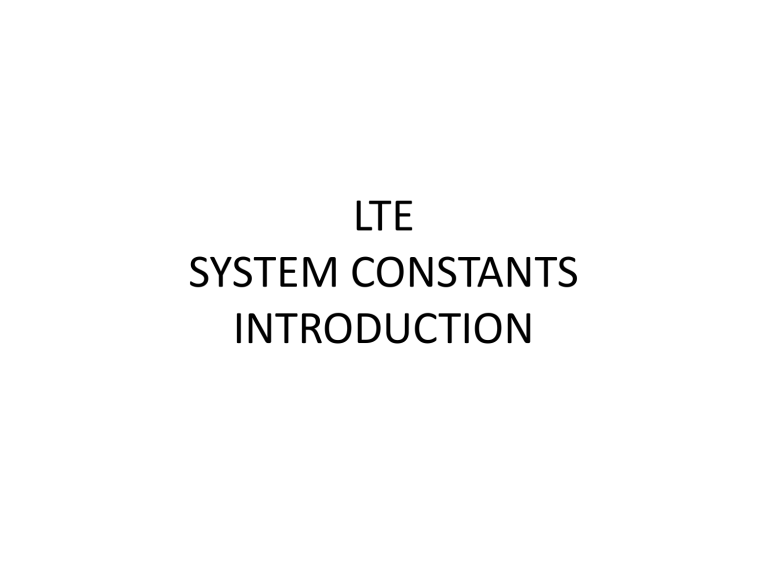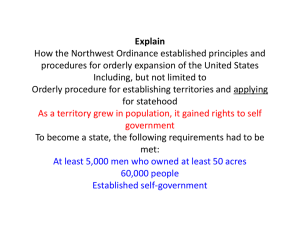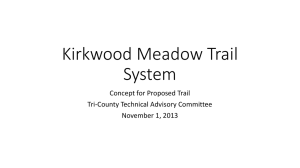LTE SYSTEM CONSTANTS INTRODUCTION

LTE
SYSTEM CONSTANTS
INTRODUCTION
System Constant
• Low layer configuration out of MO parameters
• Service aware and performance sensitive
• System constant type : Node Internal parameters and RRC parameters
• System constant generally relate to : baseband module, L1 layer format , Mac layer scheduling ,etc
WH Trail Project System
Constant Configuration
ID
Value
110 304 306 174 73 637 25 26 28 872
-96 2 6 1 86 0 100 100 5 0
System Constant : 110
• preambleInitialReceivedTargetPower
• Preamble initial received target power. Value in dBm.
• Min: -120 Max: -90 Default: -110
• WH trail eNB : -96
Note: increase the preamble initial received target power will request random access success with a better radio environment , which will help to increase the UE attach/cell-selection success rate
System Constant : 304
• dlMaxNrOfSePerTtiAndCell
• An upper threshold on the maximum number of entities that the DL scheduler is allowed to schedule per cell in one TTI.
• Min: 1 Max: 10 Default: 6
• WH Trail :2
Note:
In the DL, no advantage when time multiplex or frequency multiplex .
System Constant : 306
• ulMaxNrOfSePerTtiAndCell
• An upper threshold on the maximum number of entities that the
UL scheduler is allowed to schedule per cell in one TTI.
• Min: 1
• WH Trail : 6
Max: 8 Default: 6
Note:
Suggestion value is max value . In the UL , frequency multiplexing is a bit more efficient especially for cell edge . For more user in one
TTI , every user get less RB , so UE can concentrate all power into less RB , then power per RB will be higher , finally the better
SINR will be got for higher throughput .
System Constant : 174
• periodicSrTimer
• Timer used to simulate the reception of SR
(Scheduling Request ) until we receive SRs from the
UE
• Min: 1 Max: 80 Default: 80 Unit: ms
• WH Trail: 1
Note:
Decrease the SR simulate time , help to decrease the time cost on scheduling which will help to decrease the E2E service delay .
System Constant : 73
• initialBufferSizeDefault
• Target TB size assigned in response to SR when srCause is default
• Min: 2 Max: 2400 Default: 86 Unit: Byte
• WH Trail: 86
Note:
Manually set the SC value as the default , in another words this manually setting is no real effect .
Smaller TB size caused shorter delay but cost more resource; larger TB size cause larger delay but cost less resource .
System Constant : 637
• ulPreschedulingOn
• A flag to enable/disable the prescheduling feature in the node. (0=disabled, 1=enabled)
• Default: 0
• WH Trail: 0
Note:
Pre-scheduling working without receiving scheduling request (SR) , it help to improve E2E service latency .
System Constant : 25
• dlGinrForgettingFactorLarge
• Time domain DL GINR filtering parameter for a large forgetting factor
• Min: 1 Max: 100 Default: 75 Unit: %
• WH Trail: 100
Note:
Increase the forgetting factor to decrease the frequency of link adaption sensitivity . In some fast short time poor radio environment , ‘dull’ scheduling keep may keep the throughput more stable .
System Constant : 26
• dlGinrForgettingFactorSmall
• Time domain DL GINR filtering parameter for a small forgetting factor
• Min: 1 Max: 100
• WH Trail: 100
Default: 70 Unit: 100%
Note:
Increase the forgetting factor to decrease the frequency of link adaption sensitivity . In some fast short time poor radio environment , ‘dull’ scheduling may keep the throughput more stable .
System Constant : 28
• cqiReportTimerAperiodic
• The timer value when a new periodic CQI report should be scheduled for a UE
• Min: 0 Max: 255
• WH Trail: 100
Default: 10 Unit:ms
Note:
More CQI report cost more PUSCH resource , in trail system traffic load and radio environment is kept over a stable level , so most of CQI report carry the same information . So lengthen the CQI periodic time help to decrease the PUSCH load and release the resource for traffic
System Constant : 872
• deltaPsdRs2Tx
• Delta PSD in dB for the cell specific Reference Signal (CRS) relative to the reference PSD when using 2 Tx antenna ports.
• Min: 0 Max: 2 Default: 2 (0=0dB;1=1.77dB;2=3dB)
• WH Trail: 0
Note:
Generally speaking , RS is 3dB higher . if it set to 0 , it will help to reduce the intra-LTE interference .
System Constant Modify
Example:
• Modify the system constant acc ENodeBFunction=1,SystemConstants=1 writeSystConst
306 (SC)
6 ( value )
• Reset the system constant acc ENodeBFunction=1,SystemConstants=1 resetSystConst











